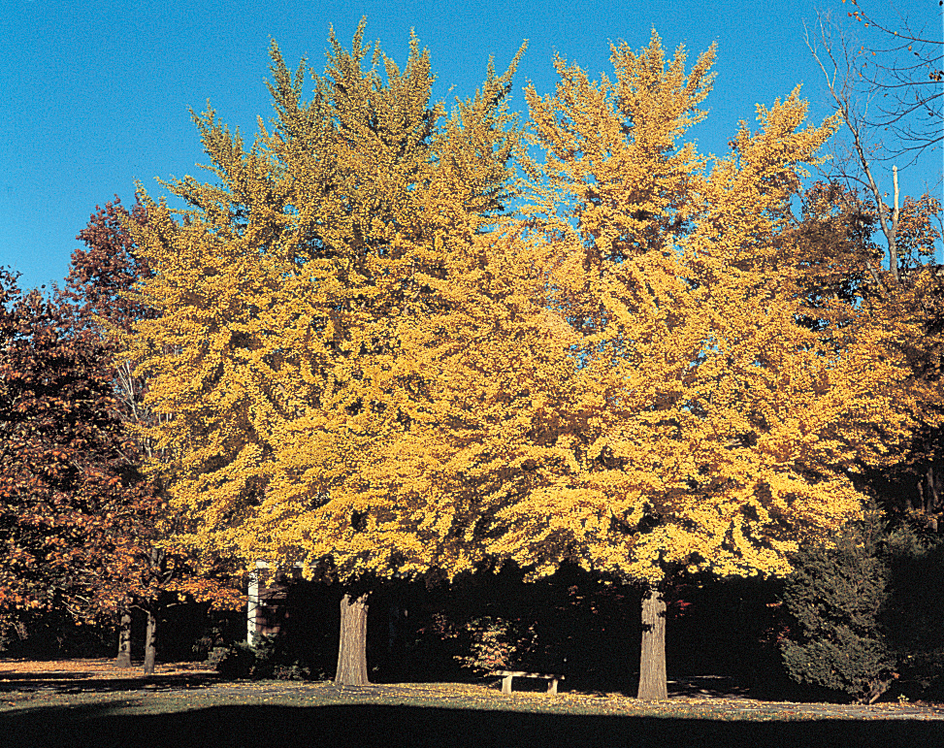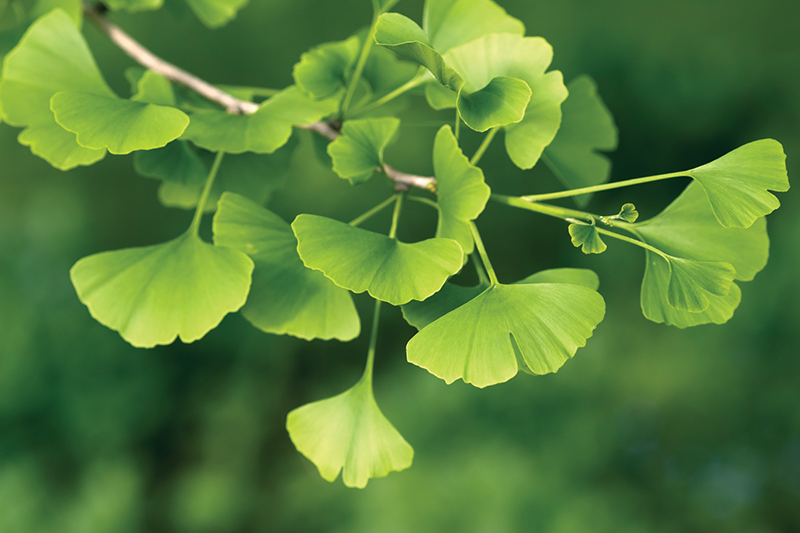Ginkgo, << GIHNG koh, >> also called the maidenhair tree, is the only surviving member of a group of plants that lived millions of years ago. It served as food for many dinosaurs during the Mesozoic Era, which lasted from about 250 million to 65 million years ago. For many centuries, the ginkgo has been planted as a sacred tree in Chinese and Japanese Buddhist temple gardens. It is resistant to disease and air pollution.

Ginkgo leaves are fan-shaped and grow in bunches at the end of short stalks. The tree usually stands 60 to 80 feet (18 to 24 meters) tall at maturity. Some ginkgoes are believed to be over 1,000 years old.

Ginkgoes are female or male, carrying either ovules (eggs) or pollen on the same short stalks as the leaves. The ovules mature into round seeds covered by yellow to orange flesh. People roast and eat the nutlike meat inside the seeds. However, the flesh is foul-smelling and is irritating to the skin of some people. The pollen-bearing (male) form does not produce seeds. It is planted as a decorative street tree in many countries, including the United States.
